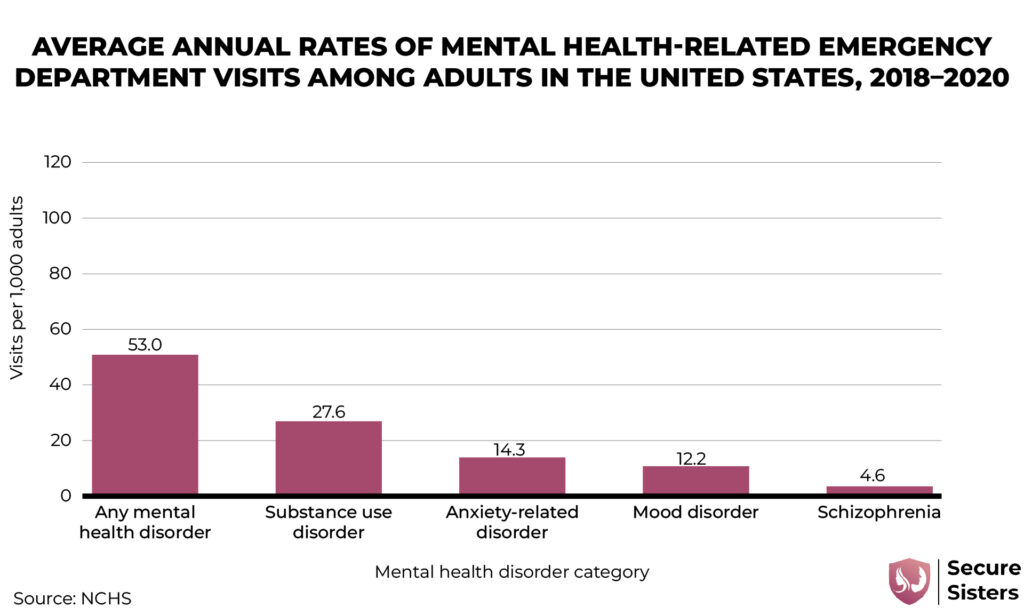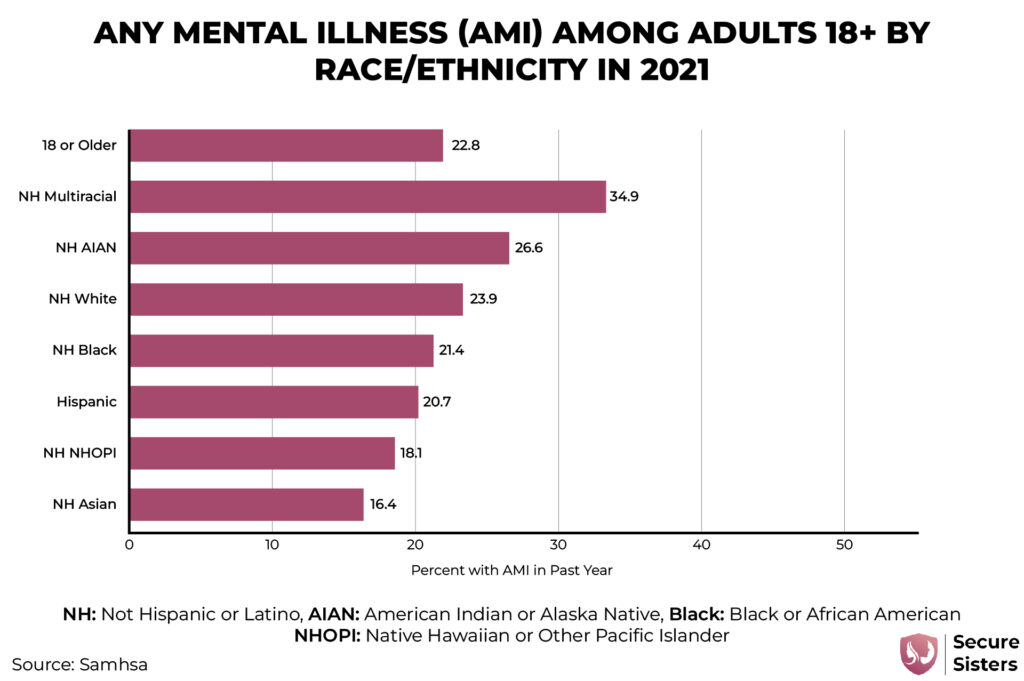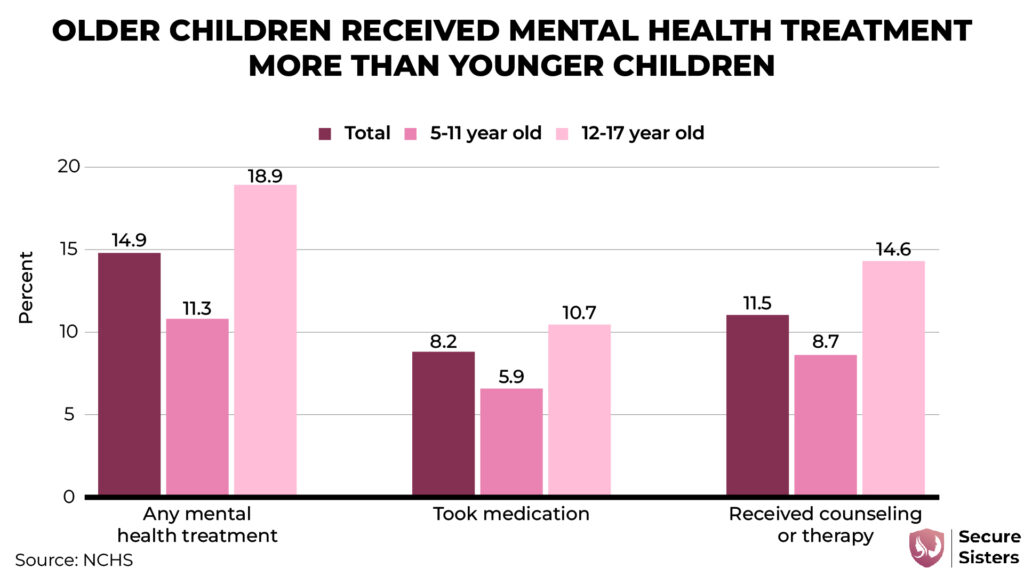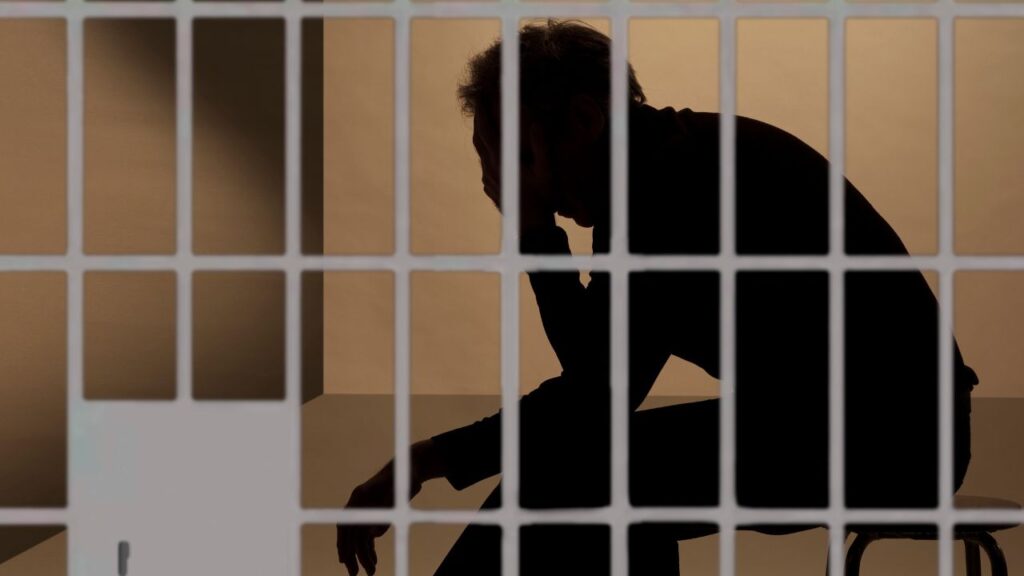Mental health is a crucial aspect of our lives, influencing our emotional, psychological, and social well-being. It shapes how we think, feel, and act, affecting our ability to handle stress, relate to others, and make healthy decisions. From childhood through adulthood, mental health plays a vital role in our overall quality of life.
In the United States, mental health conditions are more common than many might realize, impacting tens of millions of people each year. Despite this prevalence, only about half of those affected receive the treatment they need. This gap highlights the importance of understanding and addressing mental health issues.
Poor mental health can profoundly affect our well-being, our capacity to work, and our relationships with loved ones and the broader community. When someone struggles with a mental health condition, the impact often extends beyond the individual, touching families, communities, and even the economy.
As we explore the current state of mental health, we’ll look at how many people are affected, which populations are most at risk, and why it’s essential to pay attention to this critical aspect of our lives.
Mental Health Statistics

- In 2020, one in five adults in the United States, totaling 52.9 million, were living with a mental health disorder. Without regular care, patients with mental health disorders often end up seeking help for their conditions in emergency departments. (1)
- In 2021, among the 57.8 million adults who had any mental illness (AMI), 26.5 million people received some form of mental health service during that time. (2)
- In 2021, 5.5% of adults aged 18 or older, or 14.1 million people, experienced serious mental illness (SMI) within the past year. (2)
- In 2021, the highest percentage of serious mental illness (SMI) in adults was seen in young adults aged 18 to 25, with 11.4 percent or 3.8 million people affected. This was followed by adults aged 26 to 49, with 7.1 percent or 7.3 million people, and then adults aged 50 or older, with 2.5 percent or 3.0 million people. (2)
- Substance use disorders were diagnosed at a rate of 27.6 emergency department visits per 1,000 adults each year. This was followed by anxiety-related disorders at 14.3 visits, mood disorders at 12.2 visits, and schizophrenia at 4.6 visits per 1,000 adults per year. (1)

- In 2021, among adults aged 18 or older, Multiracial adults had the highest likelihood of experiencing any mental illness (AMI) in the past year at 34.9 percent. This was followed by White adults at 23.9 percent, Black adults at 21.4 percent, Hispanic adults at 20.7 percent, Native Hawaiian or Other Pacific Islander adults at 18.1 percent, and Asian adults at 16.4 percent. (2)

Importance of Mental Health Care

- In the past year, 47.2% of adults with AMI and 65.4% of adults with SMI received mental health services. (2)
- In 2021, 14.9% of children aged 5–17 received some form of mental health treatment in the past 12 months. This included 8.2% who took medication for their mental health and 11.5% who received counseling or therapy from a mental health professional. (3)
- Children aged 12–17 were more likely to have received mental health treatment in the past 12 months (18.9%) compared to children aged 5–11 (11.3%). This treatment includes taking prescription medication and receiving counseling or therapy from a mental health professional. (3)

- In 2021, boys and girls were equally likely to have received mental health treatment in the past 12 months, with 15.3% of boys and 14.5% of girls receiving treatment. (3)
- In 2021, Asian non-Hispanic children (4.4%) were less likely to receive mental health treatment than Hispanic (10.3%), Black non-Hispanic (12.5%), and White non-Hispanic (18.3%) children. (3)
- In 2020, 67.2% (1.1M) of LGB adults aged 18-25 with SMI received treatment, while 32.8% did not. (4)
- In 2021, 10.6 percent of adolescents aged 12 to 17 received mental health services through virtual (telehealth) platforms. This amounts to 2.7 million adolescents in this age group. (2)
- 122.2 million people live in a designated Mental Health Professional Shortage Area. (5)
Most Common Mental Disorders

- Overall, 63.9% of U.S. adults reported experiencing at least one ACE (Adverse Childhood Experience). (6)
- In 2021, there were over 69,000 deaths related to traumatic brain injuries (TBI) in the United States, averaging about 190 TBI-related deaths each day. TBIs impact individuals of all ages, affecting their lives in significant ways. (7)
- Studies show that people with depression have a 20-40% higher risk of cardiovascular and metabolic diseases. (8)
- In 2021, 19.4 million U.S. adults with mental illness also experienced a substance use disorder. (2)
- Among individuals experiencing homelessness, 21 percent reported having a serious mental illness, and 16 percent reported having a substance use disorder. Homelessness is linked to a higher prevalence of mental and substance use disorders compared to those who are stably housed. (9)
- In 2020, around 5.2 million veterans experienced a behavioral health condition. (10)
- Mental illness costs the U.S. economy $282 billion annually, comparable to the impact of an average economic recession. (11)
- Depression and anxiety cost $1 trillion annually in lost productivity, projected to hit $16 trillion by 2030. (12)
- In the past year, 1 in 20 adults aged 18 or older (5.2% or 13.2 million people) had serious thoughts of suicide. Additionally, 1.5% (or 3.8 million people) made a suicide plan, and 0.6% (or 1.6 million people) attempted suicide. (13)
- In 2022, nearly 1 in 4 adults (59.3 million or 23.1%) had any mental illness (AMI) in the past year. (13)
- In 2020, 17.0% of adolescents aged 12 to 17 (4.1 million) experienced a major depressive episode (MDE) in the past year. (2)
- More than 28 million people with mental illnesses are not receiving treatment. (14)
Facts About Mental Health

- Each year, about 2 million people with mental health issues, including veterans, are jailed. (15)
- Women in state (69%) and federal (52%) prisons have higher rates of mental health issues than men in similar settings. (16)
- Around 4,000 people with serious mental illnesses are in solitary confinement in U.S. prisons. (17)
- 70 percent of youths have a diagnosable mental health condition. (18)
- More than 40% of veterans face challenges with mental health or substance abuse issues. (19)
Mental Health Care Availability in Rural America

- Around 63% of people with mental health issues in state and federal prisons don’t get treatment. (20)
- In 2020, among U.S. adults in nonmetropolitan areas, 21% experienced mental illness, 6% had serious mental illness, 13% faced substance use disorders, and 5% considered suicide seriously. (21)
- Over 25 million rural Americans reside in areas with a shortage of mental health professionals. (21)
- 61% of rural adults feel COVID-19 significantly affected their mental health, with farmers reporting a higher impact at 37% compared to 22% of others. (22)
- As of December 2023, over 169 million Americans, more than half, live in Mental Health Professional Shortage Areas. (23)
- Over 5.5 million adults with mental illness, which is 10.8%, are uninsured. (14)
- State uninsured rates for adults with mental illness range from 4.1% in Rhode Island to 24.7% in Wyoming. (14)
| RankSort descending | State | Percentage | Number |
|---|---|---|---|
| 1 | Rhode Island | 4.10% | 8,000 |
| 2 | Massachusetts | 4.60% | 54,000 |
| 3 | Kentucky | 4.70% | 34,000 |
| 4 | District of Columbia | 5.60% | 8,000 |
| 5 | New York | 5.60% | 158,000 |
| 6 | Vermont | 5.80% | 7,000 |
| 7 | Wisconsin | 5.80% | 55,000 |
| 8 | Connecticut | 6.00% | 27,000 |
| 9 | Illinois | 6.30% | 122,000 |
| 10 | Virginia | 6.50% | 87,000 |
| 11 | Michigan | 6.70% | 117,000 |
| 12 | Alaska | 6.80% | 8,000 |
| 13 | Maryland | 6.90% | 53,000 |
| 14 | Pennsylvania | 6.90% | 134,000 |
| 15 | Hawaii | 7.10% | 14,000 |
| 16 | Washington | 7.20% | 111,000 |
| 17 | California | 7.50% | 456,000 |
| 18 | Montana | 7.90% | 15,000 |
| 19 | Utah | 7.90% | 57,000 |
| 20 | Delaware | 8.30% | 13,000 |
| 21 | North Dakota | 8.30% | 9,000 |
| 22 | Tennessee | 9.30% | 95,000 |
| 23 | Iowa | 9.40% | 44,000 |
| 24 | Nevada | 10.00% | 51,000 |
| 25 | West Virginia | 10.00% | 40,000 |
| 26 | Ohio | 10.20% | 226,000 |
| 27 | Oregon | 10.20% | 94,000 |
| 28 | Colorado | 10.40% | 107,000 |
| 29 | New Mexico | 10.40% | 36,000 |
| 30 | Louisiana | 11.00% | 80,000 |
| 31 | Idaho | 12.10% | 40,000 |
| 32 | Arkansas | 12.20% | 62,000 |
| 33 | Minnesota | 12.20% | 124,000 |
| 34 | Oklahoma | 12.30% | 105,000 |
| 35 | New Jersey | 12.70% | 155,000 |
| 36 | Mississippi | 13.20% | 64,000 |
| 37 | South Carolina | 13.20% | 122,000 |
| 38 | New Hampshire | 13.40% | 38,000 |
| 39 | Indiana | 13.50% | 142,000 |
| 40 | Florida | 13.60% | 393,000 |
| 41 | South Dakota | 13.90% | 17,000 |
| 42 | Maine | 14.10% | 34,000 |
| 43 | Arizona | 14.90% | 202,000 |
| 44 | Nebraska | 15.50% | 51,000 |
| 45 | North Carolina | 15.80% | 236,000 |
| 46 | Missouri | 16.70% | 155,000 |
| 47 | Georgia | 17.40% | 218,000 |
| 48 | Kansas | 17.50% | 107,000 |
| 49 | Alabama | 17.90% | 138,000 |
| 50 | Texas | 21.40% | 798,000 |
| 51 | Wyoming | 24.70% | 26,000 |
| 52 | National | 10.80% | 5,544,000 |
Final Thought
The mental health landscape in the United States reveals significant challenges, with millions of individuals affected by conditions such as major depression, bipolar disorder, and anxiety disorders. Despite the prevalence of these conditions, the utilization of mental health services remains suboptimal, highlighting a critical need for improved access to care. The data underscores the importance of mental health indicators in guiding policies and programs aimed at addressing these issues.
Organizations like the Mental Health Services Administration and the World Health Organization emphasize the importance of robust behavioral health statistics to inform effective interventions. As we continue to explore and address the complexities of mental health, a focus on comprehensive care and support for those affected by mental health disorders is essential to improving overall well-being and societal health.
References
- CDC: National Health Statistics Reports – Emergency Department Visits Related to Mental Health Disorders Among Adults, by Race and Hispanic Ethnicity: United States, 2018–2020
- SAMHSA – Key Substance Use and Mental Health Indicators in the United States: Results from the 2021 National Survey on Drug Use and Health
- NCHS Data Brief – Mental Health Treatment Among Children Aged 5–17 Years: United States, 2021
- SAMHSA – 2020 National Survey on Drug Use and Health: Lesbian, Gay, or Bisexual (LGB) Adults
- Designated Health Professional Shortage Areas Statistics: Third Quarter of Fiscal Year 2024 Designated HPSA Quarterly Summary
- Morbidity and Mortality Weekly Report: Preliminary Incidence and Trends of Infections Caused by Pathogens Transmitted Commonly Through Food — Foodborne Diseases Active Surveillance Network, 10 U.S. Sites, 2022
- Traumatic Brain Injury and Concussion: Facts About TBI
- Frontiers: Cardiovascular disease and depression: a narrative review
- SAMHSA: Addressing Social Determinants of Health Among Individuals Experiencing Homelessness
- SAMHSA: Supporting the Behavioral Health Needs of Our Nation’s Veterans
- US News – $282 Billion: What Mental Illness Costs America Each Year
- NCBI – Prevalence and economic burden of depression and anxiety symptoms among Singaporean adults: results from a 2022 web panel
- HHS, SAMHSA Release 2022 National Survey on Drug Use and Health Data
- MHA: Access to Care Ranking 2023
- NAMI: Decriminalizing Mental Illness
- BJS: Survey of Prison Inmates, 2016 – Indicators of Mental Health Problems Reported by Prisoners
- NAMI: Mental Illness and the Criminal Justice System
- OJJDP: Intersection between Mental Health and the Juvenile Justice System
- The Zebra: Mental Health Statistics
- NAMI: Mental Health Treatment While Incarcerated
- NAMI: Mental Health and Access to Care in Rural America
- Impacts of COVID-19 on Rural Mental Health
- HRSA: Behavioral Health Workforce, 2023





